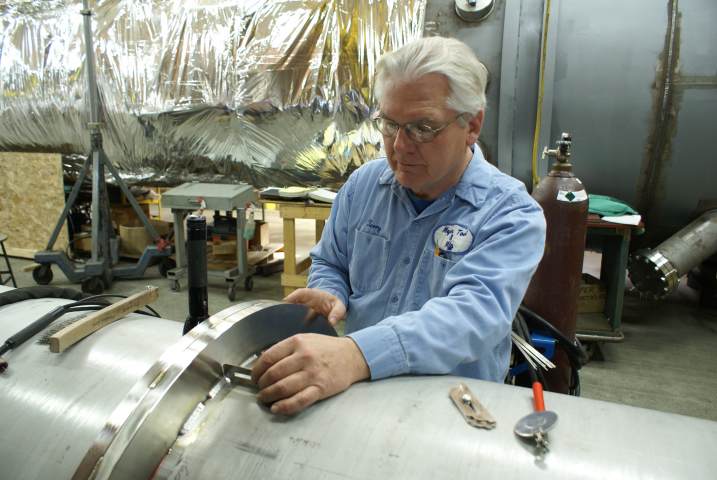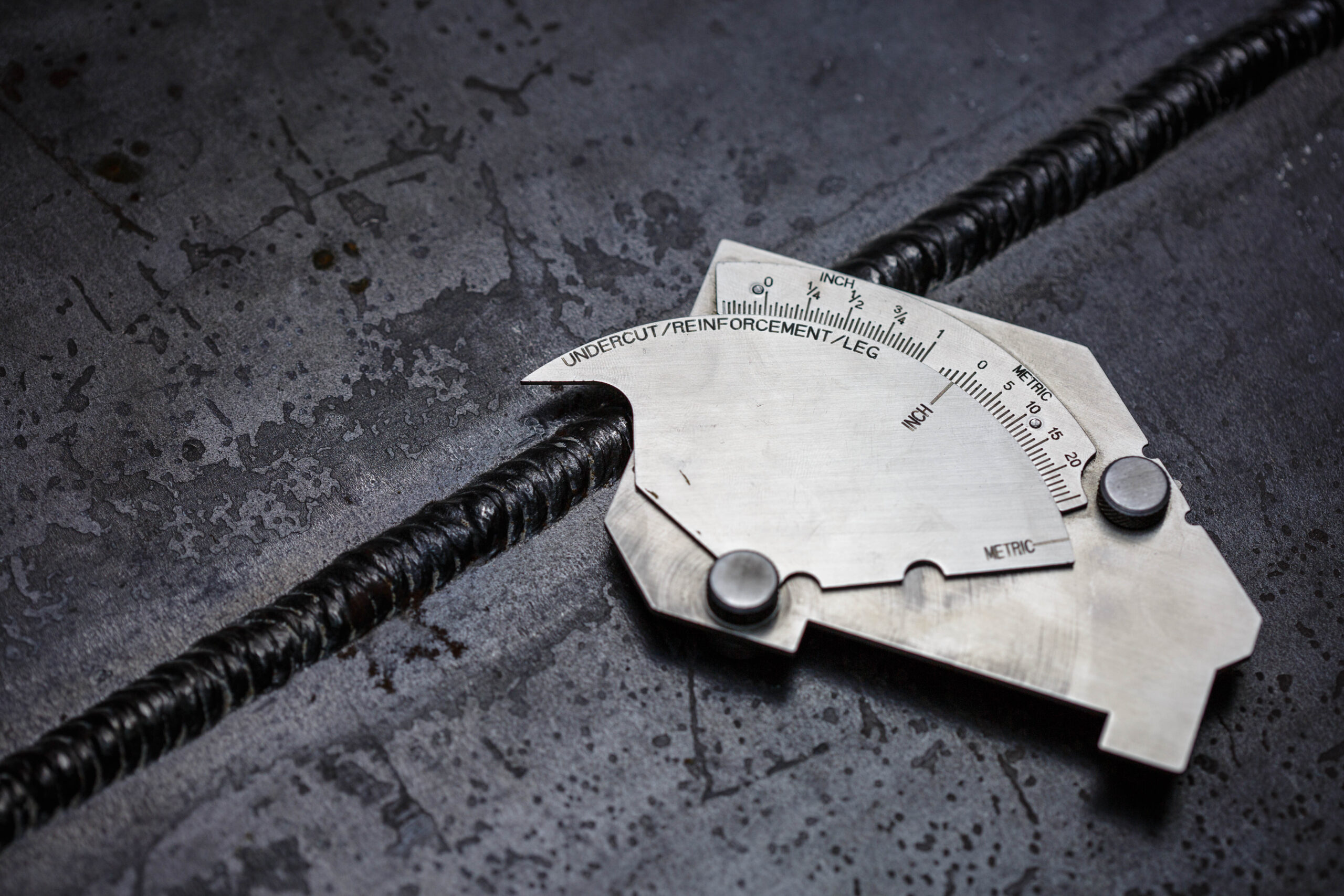Understanding the Standards for Welding Inspection Gilbert Arizona: A Complete Overview
Wiki Article
Discovering the Importance of Welding Evaluation in Industrial Applications: Securing Versus Failings and Enhancing Long Life
Welding evaluation offers as a critical line of protection in commercial applications, making certain the structural integrity and integrity of bonded parts. By systematically determining problems such as porosity and incomplete fusion, assessments not only stop failures however also prolong the lifespan of essential properties.
Role of Welding Assessment
Welding evaluation functions as an important protect in commercial applications, ensuring that welded frameworks meet specified criteria of quality and security. This procedure involves a methodical exam of welds to confirm their honesty, strength, and compliance with well-known codes and specifications. The function of welding inspection is diverse, including both visual evaluations and non-destructive screening techniques, which might consist of ultrasonic, radiographic, or magnetic bit screening.
Additionally, welding examination plays an important duty in regulatory conformity. Ultimately, the duty of welding evaluation is indispensable in advertising safety, enhancing efficiency, and shielding financial investments in commercial framework.
Usual Welding Defects

Among one of the most widespread flaws is porosity, defined by little gas pockets trapped within the weld metal. This occurs due to contaminants or incorrect protecting gas, endangering the weld's toughness. Another considerable issue is incomplete fusion, where the weld steel falls short to bond properly with the base material, potentially resulting in structural weak points.
Cracks can also develop during or after the welding process, frequently attributed to thermal anxieties or incorrect cooling rates. Additionally, undercutting, where the base metal is eroded along the weld bead, can weaken the joint and is typically brought on by too much heat input or incorrect strategy.
Furthermore, absence of penetration takes place when the weld metal does not get to the root of the joint, causing inadequate stamina. Understanding these typical issues is vital for welders and inspectors alike to make sure that welded structures fulfill safety and performance criteria, ultimately stopping possible failures in industrial applications.
Advantages of Normal Inspections
Routine examinations function as an essential safeguard in making sure the integrity and longevity of welded frameworks. These evaluations identify prospective flaws and weak points that may jeopardize the stability of welds, permitting for timely remediation before concerns rise. By implementing a structured assessment routine, organizations can dramatically decrease the threat of catastrophic failures that may bring about expensive downtime, tools replacement, or perhaps accidents.Moreover, normal inspections add to enhanced quality control throughout the welding process. By adhering to a consistent evaluation routine, business can guarantee that their welding methods meet recognized quality benchmarks and best reference practices. This not only cultivates a society of liability but additionally urges continual renovation amongst welding workers.
In addition, regular examinations assist in better upkeep preparation. By identifying damage early, companies can strategically set up replacements and fixings, lessening disruption to procedures. This proactive strategy eventually brings about prolonged property life expectancy and boosted general performance.
Finally, a dedication to routine inspections can boost a company's online reputation in the industry. Customers and stakeholders progressively value companies that prioritize safety and security and quality, consequently enhancing depend on and possibly resulting in increased service opportunities.
Market Standards and Laws
Sticking to industry requirements and regulations is an essential facet of welding evaluation that enhances the benefits of routine assessments. These criteria, established by organizations such as the American Welding Society (AWS) and the American Culture of Mechanical Engineers (ASME), supply a framework for ideal practices in welding procedures, materials, and assessment methods. Compliance with these guidelines guarantees that welds meet the required high quality and safety criteria, dramatically decreasing the threat of structural failings.Governing bodies like the Occupational Safety and Wellness Administration (OSHA) additionally apply guidelines that shield employees and the atmosphere throughout welding procedures. By adhering to these established requirements, sectors can boost the reliability of their parts and frameworks, guaranteeing they do as meant under different operational conditions.
Moreover, adherence to sector criteria cultivates consistency in high quality control, assisting in smoother interaction among stakeholders and regulatory agencies. This placement not just lessens obligation risks but additionally boosts the reputation of companies in open markets. Eventually, compliance with welding standards and laws is not just a lawful commitment; it is a crucial investment in security, performance, and long-term operational success.
Future Trends in Welding Inspection
As sectors continue to evolve, the future of welding examination is poised to incorporate sophisticated technologies that improve accuracy and performance. One of one of the most significant fads is the adoption of automation and robotics in examination processes. Automated systems can perform inspections swiftly, decreasing human mistake and enhancing throughput in making environments.In addition, the combination of expert system (AI) and equipment knowing formulas will allow anticipating analytics, enabling real-time evaluations and aggressive maintenance (Welding Inspection Gilbert Arizona). By examining data from previous assessments, these technologies can determine patterns that can indicate prospective failings, thus prolonging the lifespan of welded parts

Additionally, the pattern towards digitalization will cause boosted data administration systems that promote better tracking, discover this info here reporting, and conformity with sector standards. In recap, the future of welding assessment is defined by technological improvements that guarantee to dramatically boost integrity, safety and security, and functional performance in numerous commercial applications.
Final Thought
In verdict, welding examination serves a vital feature in guaranteeing the integrity and longevity of welded frameworks across numerous industrial applications. As advancements in innovation continue to progress, the future of welding inspection guarantees increased precision and efficiency, eventually adding to the durability of critical facilities.Welding examination serves as a crucial line of protection in industrial applications, making certain the structural stability and integrity of welded parts.Welding inspection serves as an essential protect in commercial applications, guaranteeing that bonded frameworks meet specified criteria of quality and security - Welding Inspection Gilbert Arizona. Inevitably, the role of welding assessment is indispensable in promoting security, boosting efficiency, and protecting investments in industrial framework
These standards, established by organizations such as the American Welding Culture (AWS) and the American Culture of Mechanical Designers (ASME), provide a framework for best methods in welding procedures, products, and examination strategies.In conclusion, welding inspection serves an important function in making sure the honesty and durability of welded structures across various industrial applications.
Report this wiki page